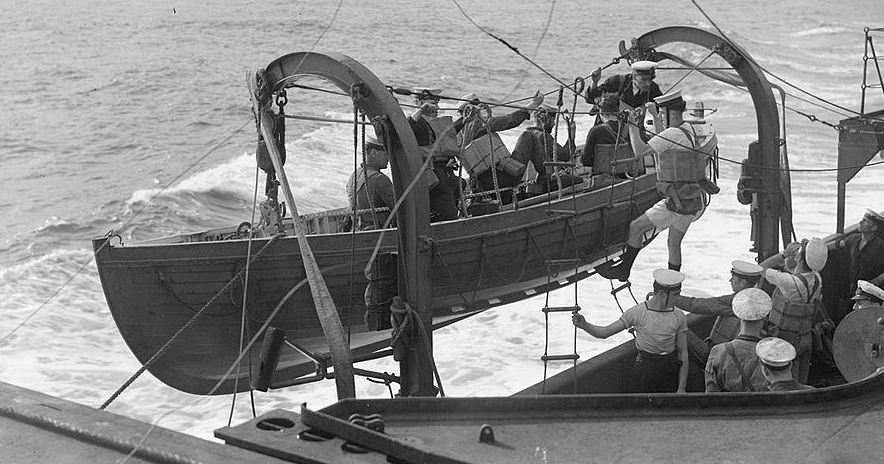Definitions of nautical terms

Photo:
© IWM A 6079
Imperial War Museum, Admiralty Official Collection, A 6079
This photo shows sailors boarding a wooden lifeboat on the side of a large Royal Navy warship in World War II.
Nautical terms:
Amidships – halfway along the side of a ship between the bow and the stern.
Asdic (sonar) – a sonar system used by warships to detect submarines nearby. Sends and receives pulses of sound through the water that reflect off a submarine.
Belly bands – straps used to secure lifeboats to the deck of S.S. Caribou.
Boom – a horizontal pole attached to a mast, used on S.S. Caribou to load and unload cargo.
Bosun – (short for boatswain) a senior member of a ship’s crew, who supervised sailors in loading cargo, launching lifeboats, maintaining lookouts and steering the ship.
Bow – the front end of a ship.
Bridge – the control room of a ship, where the crew can change the ship’s direction and speed.
Chock – a wooden block used to support and hold a lifeboat on the flat deck of S.S. Caribou.
Companionway – a ship’s stairway from one deck to another.
Davit – a crane-like arm and pulley system used to swing out and launch lifeboats from the side of a large ship. In the photo, the lifeboat is held by a curved davit at each end (bow and stern).
Depth charges – an explosive device dropped from a warship or airplane that explodes at a specified depth. Used to attack and destroy enemy submarines.
Drain plug – a plug to seal drain holes in the bottom of the lifeboat. These drain holes let rainwater out of the lifeboat when it is stored on deck (with the plugs out).
Flotsam – debris or wreckage floating on the water from a shipwreck or accident.
Fo’c’sle – (short for forecastle) is the upper deck in the front of a ship; usually the sleeping quarters for the crew.
Foredeck – the open deck near the front of a ship
Hydrophone – is a device for listening to underwater sounds. Used to detect engine and other noises coming from nearby ships or submarines.
Hypothermia – illness caused by lowered body temperature usually due to exposure to cold weather or immersion in cold water. A frequent cause of death for victims of shipwrecks in cold waters.
Jetsam – debris floating on the water that was deliberately tossed overboard from a ship.
Magnetic mine – a naval explosive device usually anchored in the water that detonates in proximity to a steel ship.
Port – the left side of a ship, when onboard and looking towards the bow.
Starboard – the right side of a ship, when onboard and looking towards the bow.
Stern – the back end of a ship.
Wake – waves created behind a moving ship as it passes through the water.

